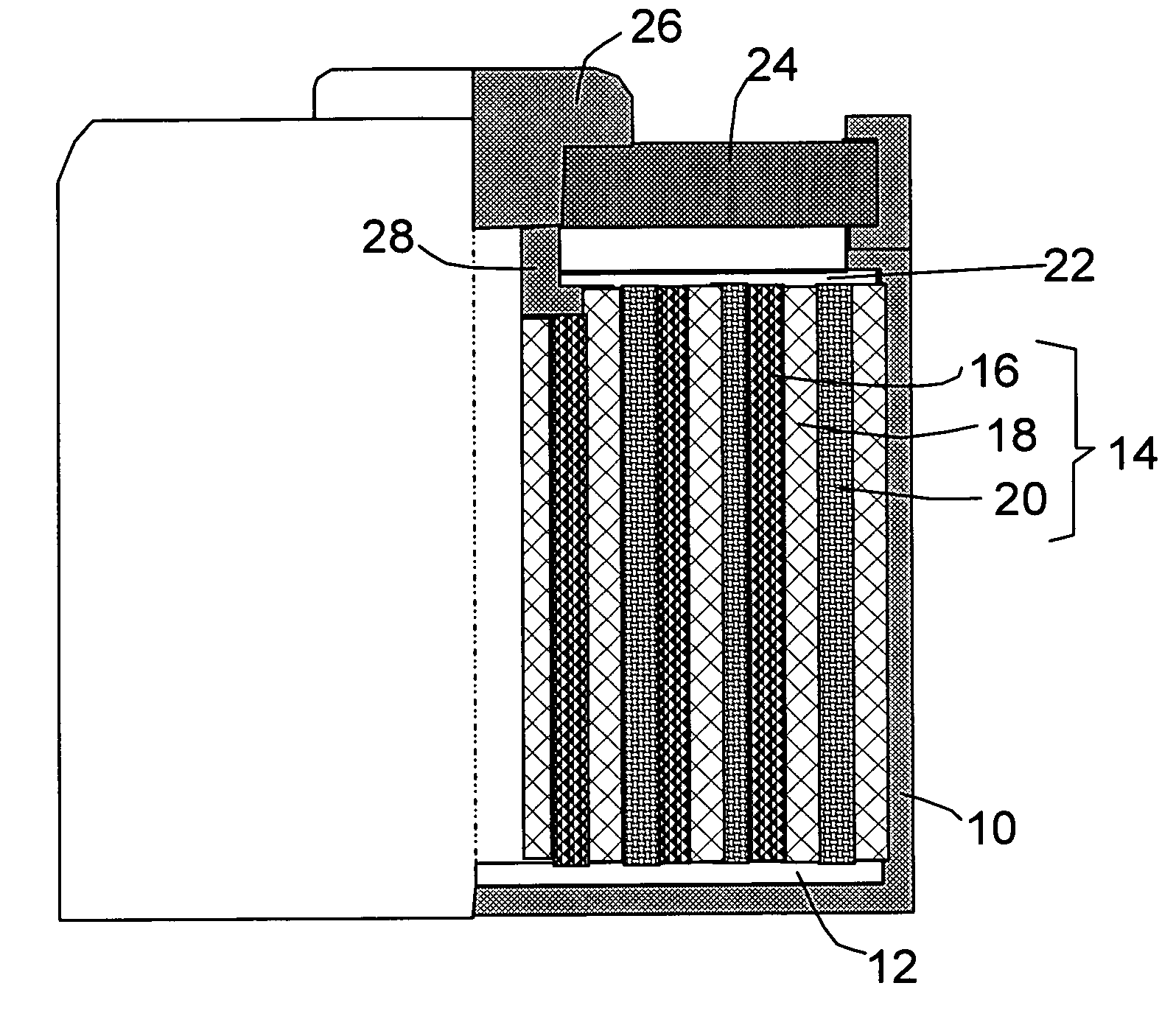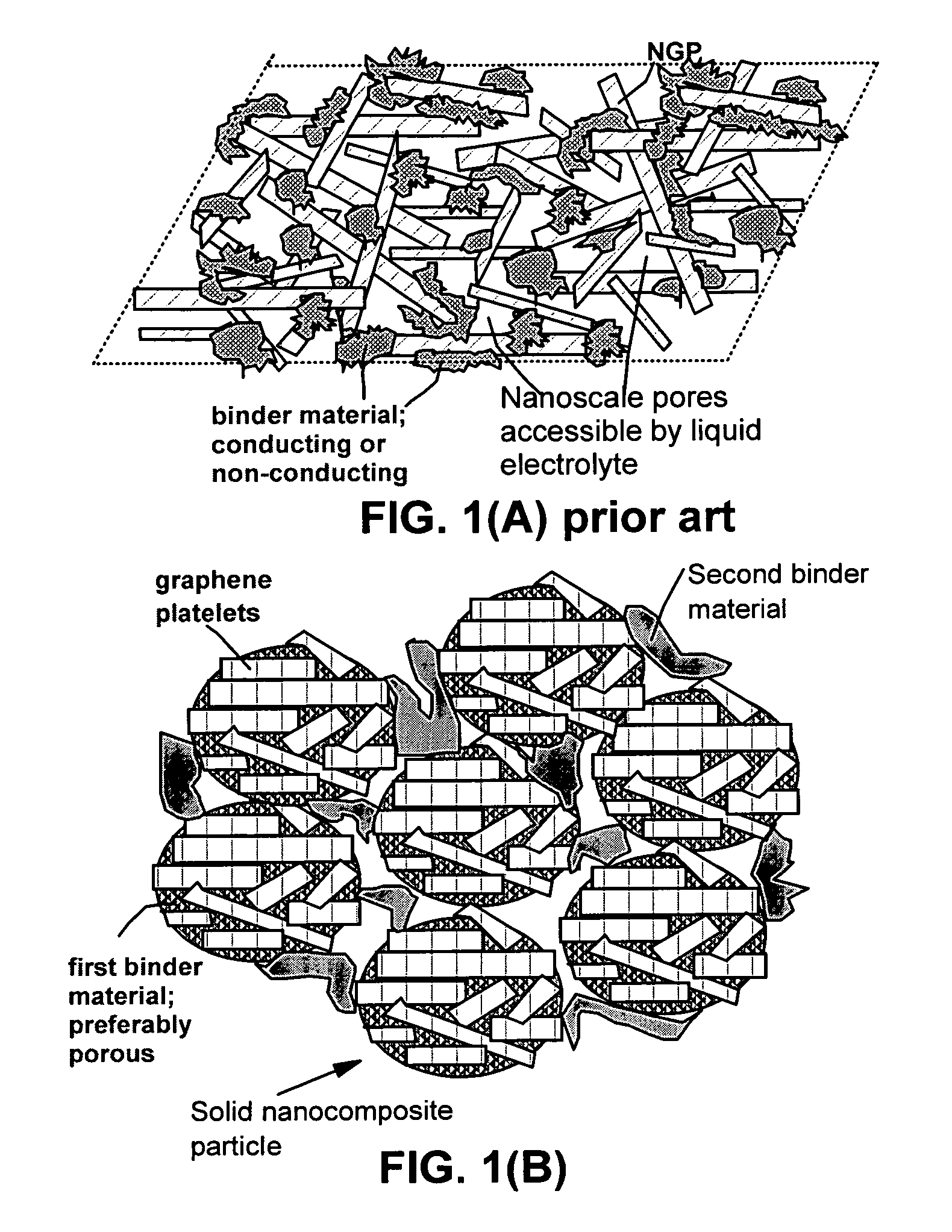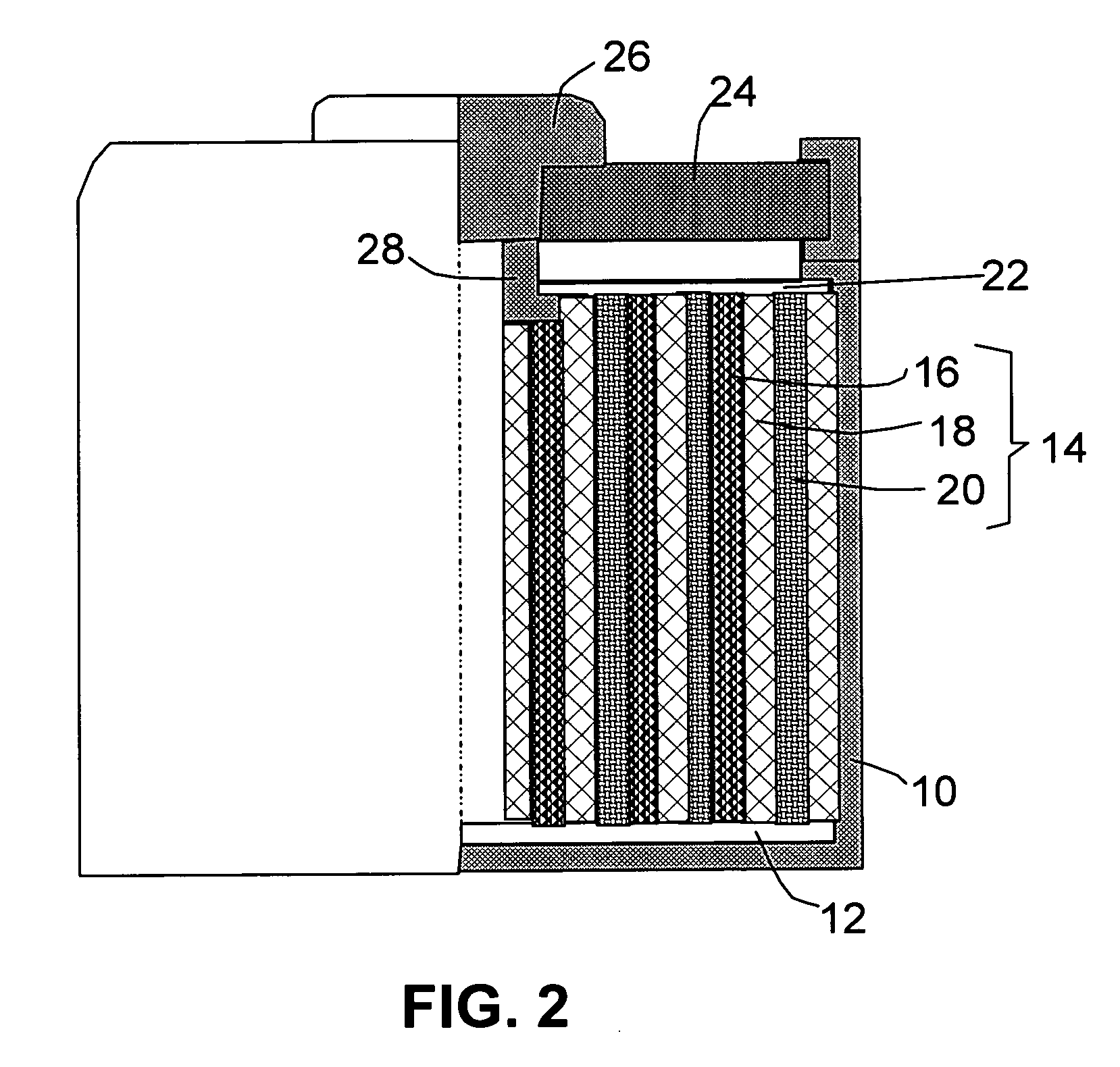Graphene nanocomposites for electrochemical cell electrodes
a technology of graphene nanocomposite and electrochemical cell electrode, which is applied in the direction of cell components, electrochemical generators, electrolytic capacitors, etc., can solve the problems of poor electrochemical performance of ngp nanocomposite, tedious, energy-intensive, and expensive graphitization process of good mcmb material, and achieve tedious, energy-intensive, and the effect of high and reversible anode capacity
- Summary
- Abstract
- Description
- Claims
- Application Information
AI Technical Summary
Benefits of technology
Problems solved by technology
Method used
Image
Examples
example 1
Preparation of NGPs of Various Sizes from Natural Graphite and Production of Corresponding Nanocomposite Solid Particles
[0119]Natural flake graphite, nominally sized at 45 μm, provided by Asbury Carbons (405 Old Main St., Asbury, N.J. 08802, USA) was milled to reduce the size to approximately 14 μm (Sample 1a). The chemicals used in the present study, including fuming nitric acid (>90%), sulfuric acid (95-98%), potassium chlorate (98%), and hydrochloric acid (37%), were purchased from Sigma-Aldrich and used as received. Graphite intercalation compounds (GICs), which were actually highly oxidized graphite or graphite oxide (GO) samples, were prepared according to the following procedure:
[0120]Sample 1A: A reaction flask containing a magnetic stir bar was charged with sulfuric acid (1.76 L) and nitric acid (0.90 L) and cooled by immersion in an ice bath. The acid mixture was stirred and allowed to cool for 20 min, and graphite (100 g) was added under vigorous stirring to avoid agglome...
example 2
NGPs and Their Nanocomposite Solid Particles from Other Laminar Graphite Materials
[0126]NGPs of Samples 2A, 2B, 2C, and 2D were prepared according to the same procedure used for Sample 1B, but the starting graphite materials were highly oriented pyrolytic graphite (HOPG, from Advanced Ceramics, Inc., Cleveland, Ohio), graphite fiber (Amoco P-100), graphitic carbon nano-fiber (from Applied Sciences, Inc., Cedarville, Ohio), and spheroidal graphite (from Hua Dong Graphite Co., Pingdu, China), respectively. Their final interplanar spacings are 6.6 Å, 7.3 Å, 7.3 Å, and 6.6 Å, respectively. They were exposed to an exfoliation temperature at 950° C. for 45 seconds, followed by a mechanical shearing treatment using a Cowles rotating-blade apparatus for 30 minutes. They were separately mixed with a phenolic resin, extruded into small diameter filaments (3 mm diameter) using a simple plunger-type device, cured at 200° C. for 2 hours, carbonized at 700° C. for 1 hour, chopped into small parti...
example 3
Electrochemical Behavior of NGP Nanocomposite Solid Particles
[0127]Graphite intercalation compound was prepared by intercalation / oxidation of natural graphite flakes (original size of 200 mesh, from Huadong Graphite Co., Pingdu, China, milled to approximately 15 μm, referred to as Sample 3a) with sulfuric acid, sodium nitrate, and potassium permanganate according to the method of Hummers [U.S. Pat. No. 2,798,878, Jul. 9, 1957]. In this example, for every 1 gram of graphite, we used a mixture of 22 ml of concentrated sulfuric acid, 2.8 grams of potassium permanganate, and 0.5 grams of sodium nitrate. The graphite flakes were immersed in the mixture solution and the reaction time was approximately one hour at 35° C. It is important to caution that potassium permanganate should be gradually added to sulfuric acid in a well-controlled manner to avoid overheat and other safety issues. Upon completion of the reaction, the mixture was poured into deionized water and filtered. The sample wa...
PUM
 Login to View More
Login to View More Abstract
Description
Claims
Application Information
 Login to View More
Login to View More - R&D
- Intellectual Property
- Life Sciences
- Materials
- Tech Scout
- Unparalleled Data Quality
- Higher Quality Content
- 60% Fewer Hallucinations
Browse by: Latest US Patents, China's latest patents, Technical Efficacy Thesaurus, Application Domain, Technology Topic, Popular Technical Reports.
© 2025 PatSnap. All rights reserved.Legal|Privacy policy|Modern Slavery Act Transparency Statement|Sitemap|About US| Contact US: help@patsnap.com



